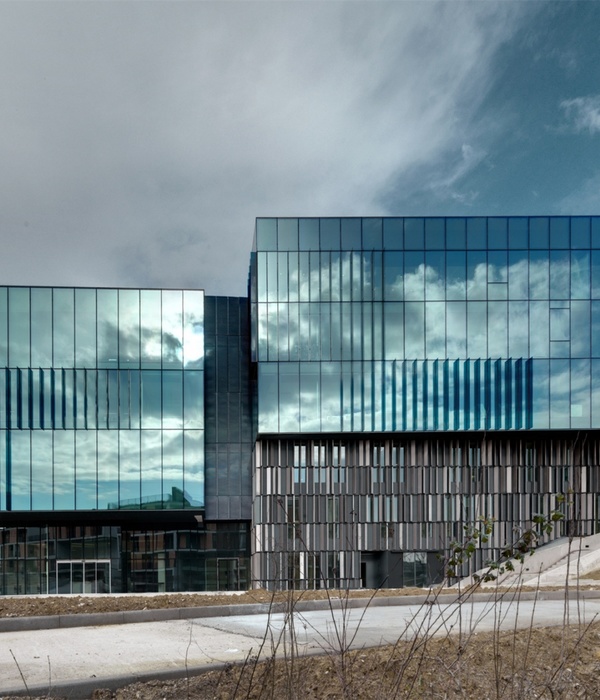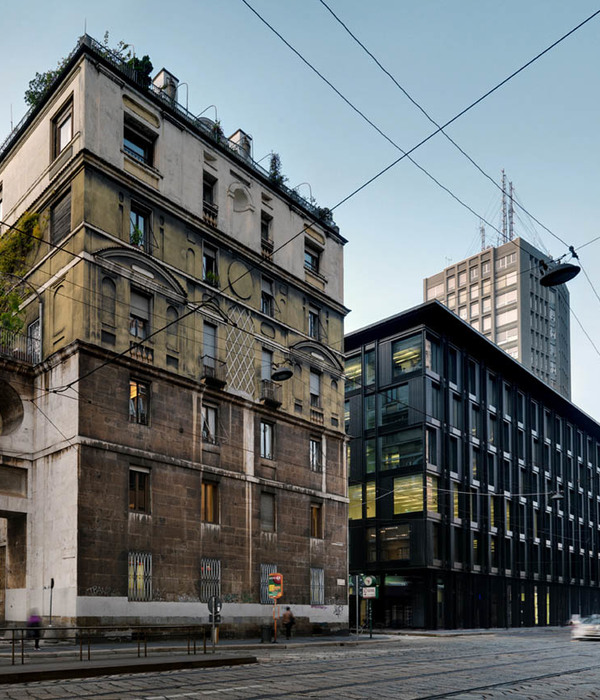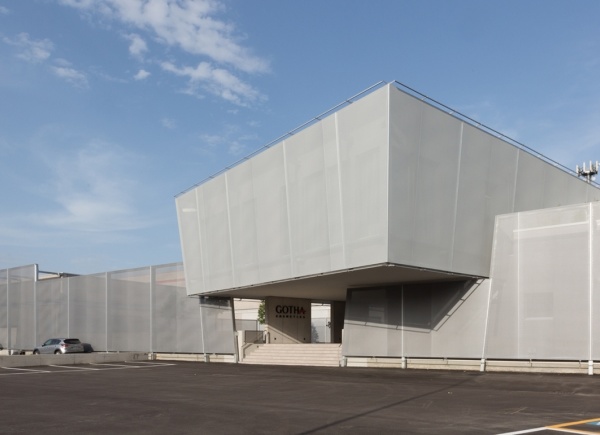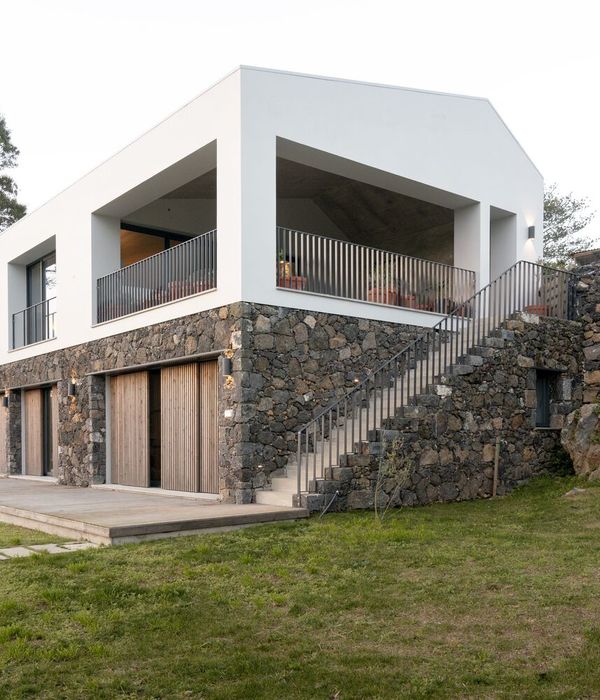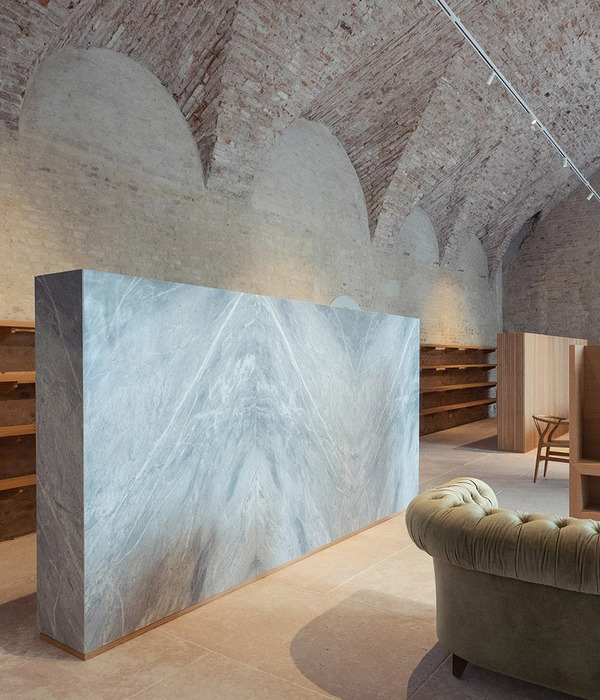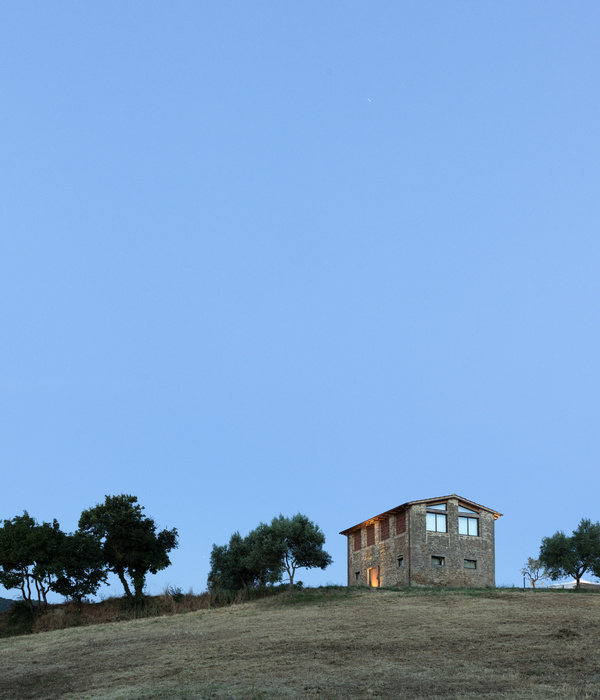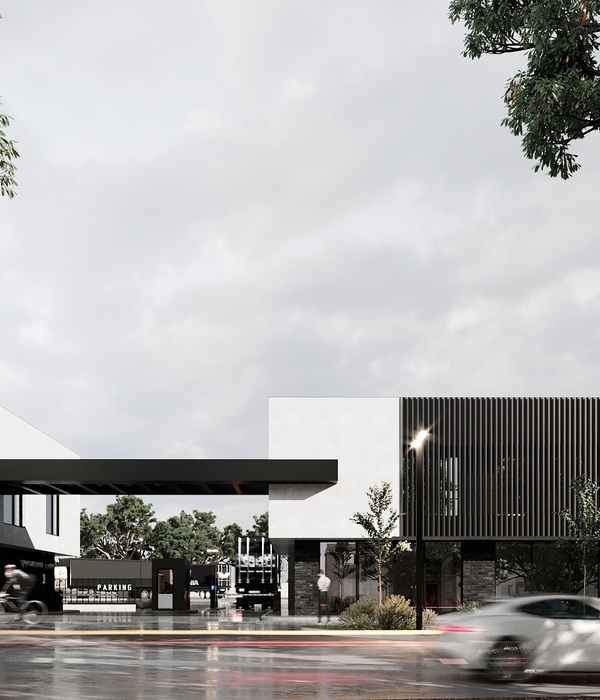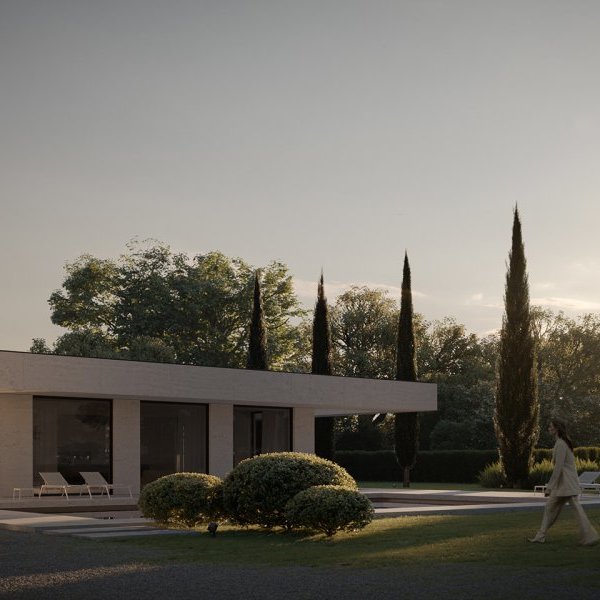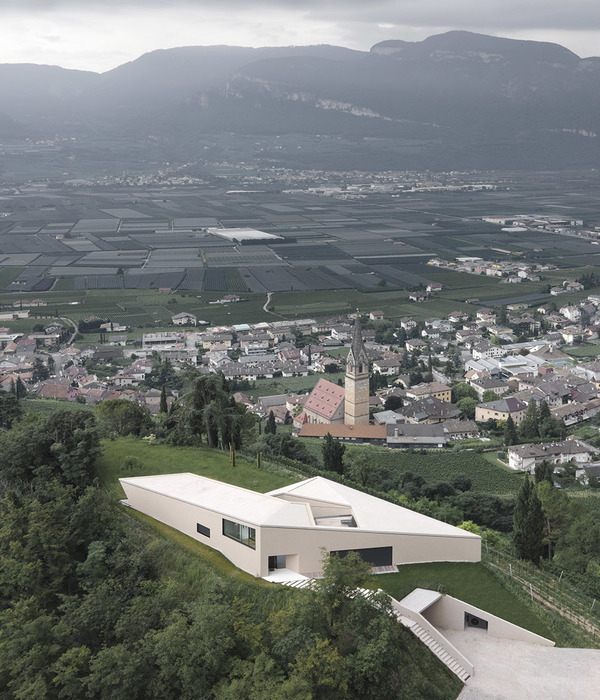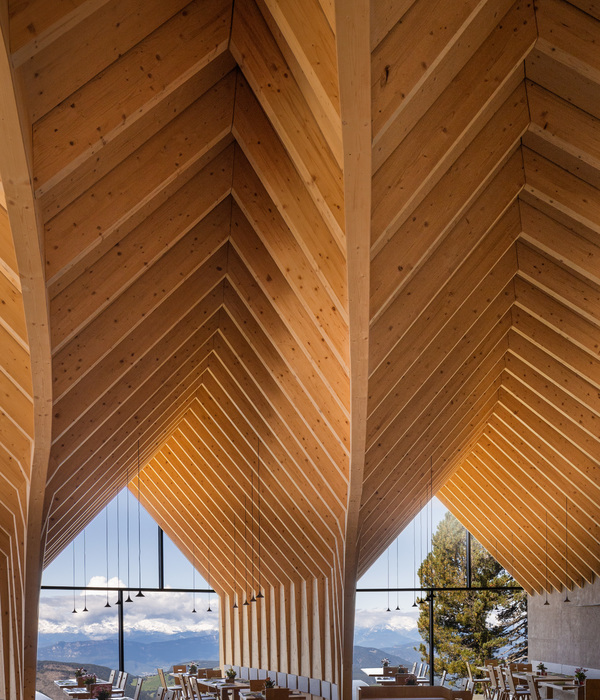项目坐落于Peloponnese南部一片平缓倾斜的橄榄林中,由Lassa Architects事务所(伦敦/布鲁塞尔)的建筑师 Theo Sarantoglou Lalis 和 Dora Sweijd 设计。
▼项目与周边环境概览,overall of the project and surrounding environment © NAARO
连续的曲面墙体围合出一个“X”形的住宅体量,将场地划分为四个不同的区域,并且在每个侧翼的末端都形成私人庭院。独特的建筑形式为东侧的庭院带来了丰富的光影变化,增强视觉体验的同时拉近了人与大自然的距离。曲面墙体由混凝土浇筑而成,墙体的表面带有凹凸不平的竖向纹理,根据墙体曲度不同,竖纹之间的距离也不同。随着一天中光线的变化,斑驳的树影在起伏的墙面上翩跹起舞,营造出梦幻般的光影效果。
▼分析图,diagram © Lassa Architects
The project is formed by a single continuous rippling wall that frames a series of protected courtyards at the extremity of each wing. The X-shaped massing divides the site into four distinct areas providing the eastern gardens with visual intimacy and variable shading throughout the day. The wall surface is animated by cast concrete ripples whose amplitude diminishes along the length of the facade. The course of the sun creates a play of shadows throughout the day. The rippling wall acts as a backdrop for tree shadows.
▼主入口一侧鸟瞰,aerial view of the entrance side © NAARO
▼西南侧鸟瞰,aerial view from the south-west side © NAARO
住宅的高度呼应了周边橄榄树的高度,限制在树冠顶端之下,这种设置为屋顶露台创造出完全不受遮挡的海景视野。此外,墙体的高度也由中心到四周不断下降,并在每翼的最末端处降至最低为1.2米。建造过程中挖掘出的土壤被重新堆砌在墙体外侧,形成斜坡,使建筑与周边的农业景观更加柔和地衔接在一起。
The height of the project is constrained to the peak of the surrounding olive trees, whilst maintaining panoramic views to the sea from an accessible roof terrace. In its deployment, the wall elevation varies as it is gradually sunken into the terrain, tapering the height of the facade to 1.2m at the end of each wing. The excavated earth was recuperated to create a tapered transition enabling a softer integration of the project within the agrarian landscape.
▼墙体的高度由中心到四周不断下降,the wall elevation varies as it is gradually sunken into the terrain © NAARO
▼主入口,entrance of the house © NAARO
Theo Sarantoglou Lalis说:“KHI住宅将两种极致的景观氛围结合在一起,东翼的庭院为人们提供了沉思的封闭空间,而西翼的露台与屋顶平台则带给人们广阔的海景;这两种景观视野,一静一动、一近一远,相互对立又相互补充。”
“KHI combines two extreme conditions which complement one another – the courtyards that provide meditative enclosure, and the west wing and roof that, in contrast, offer unobstructed panoramic views towards the sea.” says Theo Sarantoglou Lalis.
▼屋顶天台,accessible roof top © NAARO
▼流畅的曲面女儿墙与广阔的海景,Fluent curved parapet with expansive sea views © NAARO
住宅的西翼包含有公共生活区,生活区外侧是面向大海的大型半室外露台与南向的泳池露台。在住宅内部,每个房间都配有独立的露台与庭院。房间的墙壁向外延伸,轻柔地环抱住一棵稚嫩的柠檬树,连续的曲面营造出无限延展的空间感,避免了锋利的角落空间。弧线形的墙壁勾勒出天空的轮廓,色彩与光线的变化使空间氛围愈发丰富起来,让人们在室内便能感受到外界的一切。
The west wing contains the public areas as well as a large opening towards the sea and the south terrace. Internally, each room is extended by a terrace and courtyard. The room wall projects outward and folds to frame a lemon tree. The absence of corners and the continuity of the wall provide spatial expansion. The curved walls frame the changing sky colour and light, inducing a strong presence of the sky within the interior.
▼公共生活区,public areas © NAARO
▼厨房与封闭庭院与开放露台,Kitchen with enclosed patio and open terrace © NAARO
▼生活区外侧是面向大海的大型半室外露台与南向的泳池露台,large opening towards the sea and the south terrace © NAARO
“KHI住宅的业主是一对艺术收藏家夫妇,因此建筑结合了画廊、修道院以及封闭花园的设计元素。”Theo Sarantoglou Lalis解释道。
“KHI was commissioned by an art collector couple and combines elements of a gallery typology with a monastery typology of enclosed gardens,” says Theo Sarantoglou Lalis.
▼每个房间都带有小庭院,Each room has a small courtyard © NAARO
▼房间的墙壁向外延伸,轻柔地环抱住一棵稚嫩的柠檬树,The room wall projects outward and folds to frame a lemon tree © NAARO
▼庭院中变化的天光与色彩,The changing light and color of the sky in the garden © NAARO
The project was constructed by local contractors supported by LASSA’s experience with digital design and fabrication of non-standard parts. The architects collaborated with a company specializing in polystyrene products ranging from infrastructure to the fishing industry. This strategy enabled the off-site production using digital hot-wire cutting of important constructive elements such as the concrete formwork used to cast the rippling wall, bespoke lighting elements contained within the ceiling, landscape formers as well as bespoke furniture items.
▼如同画廊一般的走廊,Gallery like corridor © NAARO
▼室内细部,details of interior © NAARO
轻便的模板使得运输和安装在几天内就可以轻松完成。混凝土浇筑完成后,所有模板被重新切割成薄片,用作墙体内腔与天花板的保温材料。这一策略大大减少了建造过程中所需要的工业产品,相对地也减少了建筑材料的浪费。此外,项目中所采用的建筑材料大多于本地生产,包括:混凝土、水磨石、大理石等。
The lightness of the formwork enabled ease of transport and installation in a couple of days by a reduced team. Following the casting of the concrete, all the formwork was then re-cut into sheets and reused as insulation within the wall cavity and ceiling. This strategy allowed for a minimal use of industrially produced building parts, instead favouring a local supply chain. The project made use of locally sourced materials such as concrete, and terrazzo amongst other products from the local marble industry.
▼墙面细部,details of the exterior wall © NAARO
▼总平面图,master plan © Lassa Architects
▼平面图,floor plan © Lassa Architects
{{item.text_origin}}


